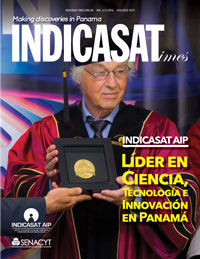

One of the telltale signs of Alzheimer’s disease (AD) is sticky plaques of ß-amyloid protein, which form around neurons and are thought by a large number of scientists to bog down information processing and kill cells.
For more than a decade, however, other researchers have fingered a second protein called tau, found inside brain cells, as a possible culprit. Now, a new imaging study of 10 people with mild AD suggests that tau deposits—not amyloid—are closely linked to symptoms such as memory loss and dementia. Although this evidence won’t itself resolve the amyloid-tau debate, the finding could spur more research into new, tau-targeting treatments and lead to better diagnostic tools, researchers say.
Scientists have long used an imaging technique called positron emission tomography (PET) to visualize ß-amyloid deposits marked by radioactive chemical tags in the brains of people with AD. Combined with postmortem
analyses of brain tissue, these studies have demonstrated that people with AD have far more ß-amyloid plaques in their brains than healthy people, at least
as a general rule. But they have also revealed a puzzle: Roughly 30% of people
without any signs of dementia have brains “chock-full” of ß-amyloid at autopsy, says neurologist Beau Ances at Washington University in St. Louis in Missouri.
That mystery has inspired many in the AD field to ask whether a second misfolded protein, tau, is the real driver of the condition’s neurodegeneration and symptoms, or at least an important accomplice. Until recently, the only ways to test that hypothesis were to measure tau in brain tissue after a person died, or in a sample of cerebrospinal fluid (CSF) extracted from a living person by needle.
But in the past several years, researchers have developed PET imaging agents that can harmlessly bind to tau in the living brain. In the new study, Ances and colleagues used one of these tags and an amyloid-binding one to analyze deposits of both proteins in 10 people with mild AD and 36 healthy adults.
The more tau deposits found in the temporal lobe, a brain region associated
with memory, the more likely a person was to show deficits on a battery of
memory and attention tests, the team reports today in Science Translational Medicine.
The same relationship did not apply to ß-amyloid, suggesting that—although
ß-amyloid PET scans can detect early stages of AD— tau is a better predictor of when people transition from the early, nonsymptomatic stages of the disease into mild Alzheimer’s disease, Ances says. He suspects that it is the combined insults from ß-amyloid and tau that drive the often-dramatic
decline: Although the brain may be able compensate for the deficits caused by
ß-amyloid, once tau starts to spread, “that pushes you over,” he says.
When the team measured tau in the study participants’ CSF, it found that higher levels were specifically correlated with increased tau in the temporal lobe, a region involved in memory processing, Ances says. That’s important, he suggests, because it means that one could potentially use tau in CSF as a diagnostic tool. That’s still a long ways off, says Pedro Rosa-Neto, a clinical neurologist at McGill University, Montreal, in Canada. The study took only
a snapshot of participants’ brains at a single point in time, so it can’t prove
any association between increased tau and mental deterioration. Still, he says,
“it is a very nice paper” that provides a “first glimpse” of how tau and amyloid contribute differently to cognitive decline.
Ances says that large, longitudinal studies tracking both tau and ß-amyloid in people over time are already underway. Ultimately, he says, the “dream” is that researchers will be able to tailor which AD therapy you need, “based on what’s happening in your brain.”
http://www.sciencemag.org/news/2016/05/tau-protein-notamyloid-may-be-key-driveralzheimer-s-symptoms?utm_campaign=news_daily_2016-05-11&et_rid=17057125&et_
cid=479912+Of+your+interest
Tel: (507) 5170700 - Fax: (507) 5070020 - EFax: (507) 5170701 | INDICASAT - AIP | Edificio 219, Ciudad del Saber | Clayton, Apartado 0843-01103 | Panamá 5 Panamá, Rep. de Panamá.
© Copyright 2014. INDICASAT AIP. Todos los derechos reservados.







